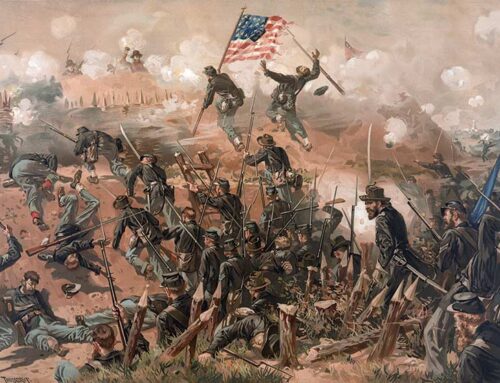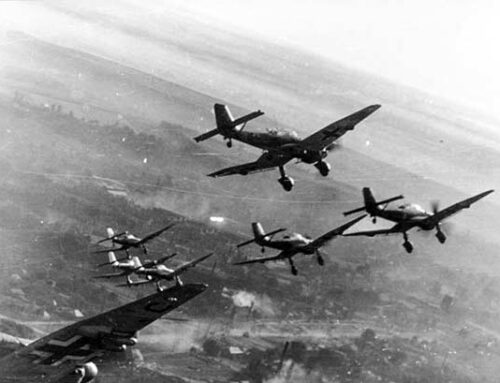
Torpedo Squadron 8 aboard the USS Hornet (CV-8) June 4, 1942. Photo: U.S. Navy
“If worst comes to worst, I want each one of us to do his utmost to destroy our enemies. If there is only plane left to make a final run in, I want that man to go in and get a hit. May God be with us all. Good luck, happy landings, and give ’em hell!”
Lt. Commander John Waldron, USN
Many know of the Battle of Midway on June 4, 1942. Some might also know that it marked the turning point of the war in the Pacific. On that day, three squadrons of SBD scout bombers from the aircraft carriers Enterprise and Yorktown dove on the Japanese fleet and put the Japanese Kaga, Akagi, and Soryu carriers permanently out of action. Later that day, American carrier-based planes sank a fourth carrier – the Hiryu.
What is not so well known known are the amazing circumstances that led to the United States Navy turning the tide of the war by ending permanently Japan’s near total dominance of the Pacific. While the Battle of Midway is filled with many incredible stories, any one of which could have changed the entire outcome of the battle, one stands out.
Lt. Commander John Waldron led Torpedo Squadron Eight straight into the jaws of the Japanese fleet, completely unescorted by fighter cover. Japanese Zero fighter aircraft, providing protection for the fleet high above, found the temptation of attacking the slow and lumbering American torpedo planes irresistible and quickly descended to sea level to stop the torpedo attack. Lt. Commander Waldron’s entire squadron was destroyed by the fast and maneuverable Zero’s. Every single plane was shot down. Worse yet, not one managed to get lose enough to the Japanese fleet to score a single hit.
What appeared to be total sacrifice without result byLt. Commander John Waldron and those brave American pilots would arguably change the outcome of the war. As the Zero fighters, now at sea level, finished off Torpedo Squadron Eight, the three squadrons of SBD scout bombers arrived high above, and commenced the attack, completely unopposed by the now out of range Zero fighters. Within minutes, three Japanese carriers were burning out of control and the tide of the war had changed forever. What looked to be a total loss of men and machine proved to be the factor that made the dive bomber attack succeed.







Leave A Comment